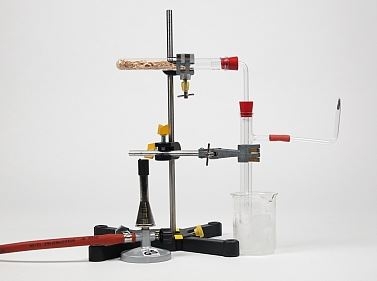The acetic acid is formed, just as the methanol, from the methoxy groups of the Iignins. The acetic acid content of the distillate is approx. 6%, which is about three times higher than that of methanol.
An indication that further decomposition products are formed should be given.
Learning objectives
- Acetic acid is, among other substances, produced by the dry distillation of wood.
- This so-called wood vinegar is an acid and can be distinguished from other distillation products (e.g. methanol) with indicators.
Benefits
- Easy teaching and efficient learning by using interactive experimentation PHYWE-Software
- Experiment is part of a complete solution set with experiments for the topic Organic Chemistry matched with international curriculum: all topics are covered



